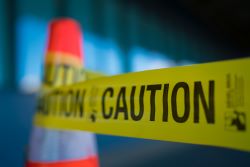Active Shooter Preparedness and Response for Healthcare Practices
Marcy A. Metzgar
Healthcare practices, like hospitals, need to be ready for the tragic reality of an active shooter at their location. However, unlike hospitals, they have fewer people to protect and cover less square feet. Despite the physical environment of a healthcare practice, having an emergency preparedness plan in place that addresses an active shooter situation is critical.
Because not every healthcare practice is the same, it’s important to identify the risks, threats, and vulnerabilities of your practice so your emergency preparedness plan is tailored appropriately. The following strategies may be helpful in managing your healthcare practice’s approach to planning and preparing for an active shooter situation:
- Engage a qualified healthcare security professional to perform a security vulnerability assessment (SVA) on your practice as part of your emergency preparedness plan. Direct that professional to evaluate the safety of your office, from the reception and waiting areas to the exam rooms and parking lots.
- Devise (or modify) the practice’s emergency preparedness plan with the information received from the SVA. The SVA should address your environment, culture, and surroundings.
- Create a training program based on your plan. Educate your employees on the plan as well as the processes and procedures for how to respond in an active shooter situation. Be sure they know their roles and responsibilities.
- To accompany your training, conduct tabletop exercises and drills to simulate response to an active shooter situation. Use the exercises as an opportunity to tweak the active shooter part of the emergency preparedness plan by identifying what works and what doesn’t. In addition to training staff about active shooter response, they may also benefit from training on identifying and de-escalating aggressive behavior.
- Be sure staff members know how to protect patients, how to respond if they’re close to the active shooter, how to respond if they’re not close to the active shooter, how to be aware of high-risk and security-sensitive areas, how to hide in offices with the doors locked, how to use furniture to block entrances into rooms, and to call 911 when it is safe to do so.
- Establish relationships with a security firm, a restoration cleaning service, a public relations specialist, and an attorney. As you navigate through the shock and aftermath of an incident, you will save yourself valuable time and hassle by having these contacts on hand. You may experience additional crime, some biohazards may have resulted, and the media may be asking questions.
- Refer any employees to behavioral health services as needed for crisis counseling after an active shooter situation.
- Hold a debriefing with all staff after an incident occurs to pinpoint any critical gaps in operations that may have occurred. Adjust the practice’s emergency preparedness plan to reflect the lessons learned.1
Endnotes
1 U.S. Department of Homeland Security. (2008, October). Active shooter: How to respond. Retrieved from https://www.dhs.gov/xlibrary/assets/active_shooter_booklet.pdf; Wilder, S. S. (2019, March 12). An active shooter in physician offices: Planning for the unthinkable. Physicians Practice. Retrieved from https://www.physicianspractice.com/view/active-shooter-physician-offices-planning-unthinkable; The Joint Commission. (2021, June). Quick safety 4: Preparing for active shooter situations (updated June 2021). Retrieved from https://www.jointcommission.org/resources/news-and-multimedia/newsletters/newsletters/quick-safety/quick-safety--issue-4-preparing-for-active-shooter-situations/preparing-for-active-shooter-situations-addendum-february-2017/#.YtHTIpfMI2z



